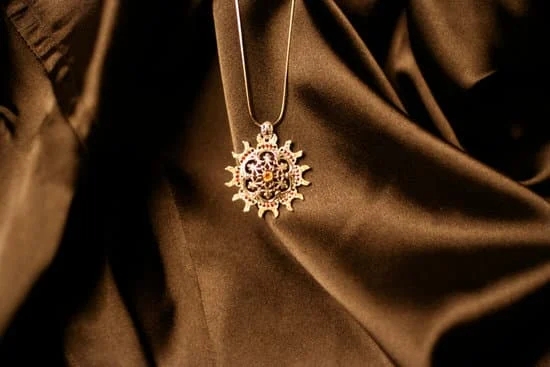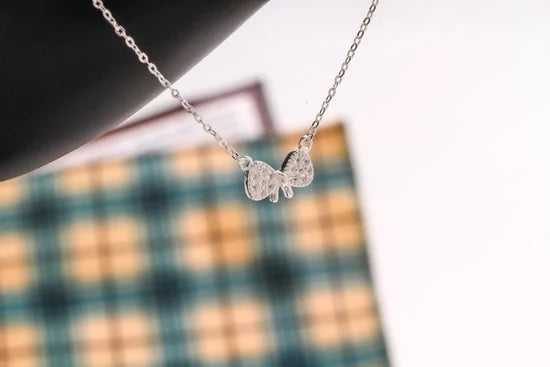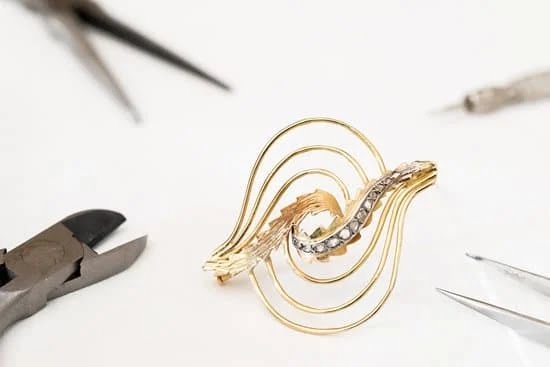Gemstone jewelry has always held a special allure, with its captivating colors and timeless elegance. Whether it’s a dainty necklace or a statement ring, gemstone jewelry adds an instant touch of sophistication and uniqueness to any outfit. And while there are various techniques involved in creating gemstone jewelry, one fundamental skill stands out: drilling holes in gemstones.
Drilling holes in gemstones is not just about creating an opening for strings or wires to pass through; it’s also about unlocking the true potential of these precious stones. By allowing light to penetrate the stone from all angles, drilling holes enhances the play of colors and creates stunning visual effects. Moreover, it opens up endless possibilities for intricate designs and settings that highlight the natural beauty of the gemstones.
However, drilling gemstones requires precision, patience, and the right set of tools. Using inappropriate methods or tools can result in damage to the stone or even injury to oneself. Therefore, it is crucial to understand not only how to drill holes in gemstones but also how to select the right tools and take necessary safety precautions.
In this comprehensive guide, we will take you through every step of the process – from understanding why drilling holes in gemstones is important to troubleshooting common issues that may arise along the way. We will provide tips on preparing your gemstone for drilling and guide you through the actual drilling process with detailed step-by-step instructions. Additionally, we will explore various ways you can incorporate drilled gemstones into your own unique jewelry designs.
Stay with us as we delve into the fascinating world of drilling holes in gemstones for jewelry making. Let’s unlock the hidden beauty within these mesmerizing stones and embark on a journey of creativity and self-expression through stunning handcrafted jewelry pieces.
Understanding the Importance of Drilling Holes in Gemstones
Drilling holes in gemstones is a crucial step in creating beautiful and unique jewelry pieces. It allows for secure setting and design flexibility, making it easier to incorporate gemstones into various types of jewelry such as necklaces, bracelets, earrings, and more. In this section, we will explore why drilling holes in gemstones is necessary and discuss the benefits it brings to jewelry making.
Firstly, drilling holes in gemstones enables strings or wires to pass through them, providing a secure setting for the gemstone in the jewelry piece. Whether you are using beads or larger gemstones as a centerpiece, drilling a hole allows you to string them together or attach them to findings. This is especially important for beadwork or when working with delicate or irregularly shaped gems that cannot be easily set using prongs or bezels.
In addition to securing the gemstone in a jewelry piece, drilling also offers design flexibility. By drilling holes strategically, jewelers can create innovative designs and layouts that showcase the beauty of the gemstone. For example, they can create multiple strands of beads connected by one central stone or add hanging pendants to necklaces or earrings. The possibilities are endless when you have the ability to drill holes in your gemstones.
To successfully drill holes in gemstones without causing damage, it is vital to use the right tools and materials. In the next section, we will discuss in detail the tools needed for this process and emphasize their importance in ensuring a smooth drilling experience while safeguarding the integrity of your precious gems.
Tools and Materials Needed for Drilling Gemstones
- A drill: Invest in a high-quality rotary tool with adjustable speed settings and good control options.
- Diamond drill bits: Choose diamond-tipped bits specifically designed for drilling through hard materials like gemstones.
- Lubricant: Use a lubricant like water or oil to keep the drill bits cool and prevent overheating or damage to the gemstone.
- Safety goggles: Protect your eyes by wearing safety goggles to prevent any small debris or flying particles from getting into your eyes.
- Clamps or vices: Use these tools to securely hold the gemstone in place while drilling.
- Fine-grit sandpaper: Have fine-grit sandpaper on hand for smoothing rough edges after drilling.
By using the right tools, you can ensure a successful drilling experience that yields perfect holes in your gemstones. In the next section, we will explore how to properly prepare the gemstone before drilling, as this step is crucial for avoiding potential issues during the process.
Tools and Materials Needed for Drilling Gemstones
When it comes to drilling holes in gemstones for jewelry making, having the right tools and materials is essential. Without proper equipment, the risk of damaging the gemstone or even causing injury to oneself is increased. This section will provide a comprehensive list of the tools and materials needed for drilling gemstones, as well as emphasize the importance of using the correct tools.
The first tool that is absolutely necessary for drilling gemstones is a drill. It is recommended to use a rotary tool with adjustable speed settings, as this allows for more control during the drilling process. Diamond drill bits are also essential, as they are specifically designed to cut through hard surfaces like gemstones. It is important to have a range of different sizes to accommodate various hole diameters.
In addition to the drill and diamond drill bits, there are several other materials and tools that are needed for successful gemstone drilling. Lubricant is crucial for reducing friction and heat build-up during drilling; water or a specific lubricant made for drilling can be used.
Safety goggles are a must-have item to protect your eyes from any debris that may be generated while drilling. Other items such as a clamp or vise, masking tape, and a soft cloth or pad should also be kept on hand to secure the gemstone in place and prevent any damage.
Using the right tools when drilling gemstones is extremely important in order to avoid damaging the stones or compromising their quality. Regular drill bits can easily break or chip fragile gems, whereas diamond drill bits provide cleaner cuts and reduce the risk of fracturing the stone. Investing in good-quality tools will not only make the job easier but also ensure that your finished jewelry pieces look professional and well-crafted.
By having all the necessary tools at hand before starting your project, you will set yourself up for success when it comes to drilling holes in gemstones for jewelry making. The next section will delve into how to properly prepare your gemstone before drilling, as this step is crucial for achieving the best results.
Preparing the Gemstone for Drilling
Choosing the Right Gemstone for Drilling
Before starting the drilling process, it is essential to choose the right gemstone for your project. Not all gemstones are suitable for drilling, as some may be too fragile or prone to breaking during the process. It is important to select a gemstone that is hard enough to withstand drilling without compromising its structure or aesthetics.
When choosing a gemstone for drilling, consider hardness and durability. Gemstones such as diamonds, rubies, sapphires, and topaz are excellent choices due to their hardness. On the other hand, opals, pearls, emeralds, and tanzanite are more delicate and should be handled with caution.
Inspecting the Gemstone
Before drilling, closely inspect the gemstone for any signs of weaknesses or fractures. Check for cracks or internal fissures that may compromise the integrity of the stone during drilling. Hold it up against a light source to detect any internal flaws that may not be visible to the naked eye.
If you notice any weaknesses in the gemstone, it is advisable not to proceed with drilling as it could lead to permanent damage or even shattering of the stone. It is better to find an alternative gemstone rather than risk ruining one that may have sentimental or monetary value.
Additionally, ensure that you clean your gemstone thoroughly before starting the drilling process. Any dirt or residue on the surface can affect how effectively you drill into the stone.
Securing and Protecting the Gemstone
Once you have chosen a suitable gemstone and inspected it for weaknesses, it’s time to secure it properly before starting drilling. This step ensures stability throughout the process and reduces any chances of slippage or accidents.
To secure your gemstone while drilling, consider using a clamp or hold-down device specifically designed for jewelry making. These devices will keep your hands free and allow you to focus on the drilling process without worrying about slipping or injuries.
While using a clamp, ensure that it holds the gemstone firmly but with gentle pressure. Excessive force can crack or damage the stone. It is also advisable to protect the gemstone surface by wrapping it in a soft cloth or using masking tape. This will prevent scratches or accidental slips during drilling.
Positioning the Gemstone
Proper positioning of the gemstone is crucial for accurate and successful drilling. Once you have secured the gemstone in place, carefully position it on a stable work surface where you will have easy access to all sides of the stone.
Make sure that the area you will be drilling is clearly marked. It is recommended to use a waterproof marker or tape to mark where you want to create your hole. This will help guide your drill bit and ensure precision in your work.
Remember, take your time when preparing your gemstone for drilling. Rushing through this step can lead to costly mistakes and irreversible damage. By choosing the right gemstone, inspecting it thoroughly, securing it properly, and positioning it accurately, you are setting yourself up for success as you move forward with the drilling process.
Step-by-Step Guide
Gather your tools and materials
Before you begin drilling, it’s important to gather all the necessary tools and materials. You will need a drill with a diamond-tipped drill bit specifically designed for drilling gemstones. It’s crucial to use a diamond drill bit as it is strong enough to cut through the hard surface of gemstones without causing damage. Additionally, you will require a lubricant such as coconut oil or water to keep the drilling area cool and prevent overheating.
Prepare the gemstone
To ensure successful drilling, it’s important to prepare the gemstone beforehand. Start by selecting a suitable gemstone for drilling – one that is free from any fractures or weaknesses that could cause it to crack during the process. Inspect the gemstone carefully under a bright light or using a magnifying glass if needed. It’s also recommended to give the gemstone a gentle cleaning using mild soap and water before you begin.
Secure the gemstone and start drilling
When ready, securely hold your gemstone in place using either your fingers or a clamp or vice grip. Make sure that only the area where you want to drill is exposed and visible. Before starting the actual drilling process, put on your safety goggles to protect your eyes from any debris that may fly off during drilling.
With your drill set at its lowest speed setting, place the tip of your diamond drill bit on the spot where you want to create the hole. Apply gentle pressure and start drilling slowly while ensuring that your hand remains steady throughout the process. Don’t rush – take breaks if necessary to allow both yourself and the gemstone to rest.
Remember that different gemstones may require different amounts of time for drilling, so be patient and maintain a consistent pace until you successfully pierce through the stone. Keep adding water or coconut oil as lubricant throughout so that the drill bit remains cool and efficient. Once the hole is complete, remove any debris or dust from both the gemstone and the drilled hole.
By following these step-by-step instructions, you can successfully drill holes in gemstones for your jewelry making projects. Remember to practice caution, take your time, and enjoy the process of transforming beautiful gemstones into stunning pieces of jewelry.
Ensuring Safety during Gemstone Drilling
When it comes to drilling holes in gemstones for jewelry making, safety should always be a top priority. The process involves using sharp tools and working with fragile materials, so taking the necessary precautions is essential to prevent accidents or damage. Here are some tips on how to ensure safety while drilling gemstones:
- Wear protective gear: Before starting any drilling project, make sure to wear safety goggles to protect your eyes from flying debris. Gemstones can chip or break during the drilling process, and tiny fragments can cause serious eye injuries.
- Work in a well-ventilated area: When drilling gemstones, it’s important to have proper ventilation as some gemstone dust can be harmful if inhaled. If possible, set up your workstation near an open window or use a fan to improve air circulation.
- Use lubricants: Lubricants such as water or specialty coolants are essential for keeping the drill bit and gemstone cool during the drilling process. This helps prevent overheating and reduces the risk of damaging the gemstone.
It’s also crucial to choose the appropriate drill bits for different types of gemstones. Diamond drill bits are commonly used because diamonds are one of the hardest materials, making them highly effective for cutting through other gems. However, softer gemstones may require different drill bits to avoid cracking or chipping.
Remember that patience is key when drilling gemstones. Apply gentle pressure and allow the drill bit to do most of the work. Rushing or applying excessive force may cause the gemstone to crack or shatter.
By following these safety precautions and using the correct techniques, you can enjoy a safe and successful drilling experience while creating beautiful jewelry pieces with your favorite gemstones.
Troubleshooting Common Issues while Drilling Gemstones
Drilling gemstones for jewelry making can be a delicate process, and it is not uncommon to encounter some challenges along the way. In this section, we will address common issues that may arise during the drilling process and provide solutions and techniques to overcome them.
One of the most common issues while drilling gemstones is chipping. Gemstones are known for their hardness, but some varieties are more prone to chipping than others. To minimize the risk of chipping, it is important to choose the right drill bit for the type of gemstone you are working with.
Diamond drill bits are commonly used for drilling gemstones due to their superior strength and durability. It is also advisable to start with a smaller bit size and gradually increase the size if needed.
Another issue to watch out for when drilling gemstones is overheating. Overheating can lead to cracks or discoloration in the gemstone. To prevent this from happening, it is crucial to apply consistent and moderate pressure while drilling. Using a lubricant specific to gemstone drilling can help reduce friction and heat buildup during the process. Additionally, taking breaks between drilling intervals will allow the gemstone to cool down.
It is worth noting that different types of gemstones have varying levels of hardness and sensitivity. Some softer stones like turquoise or opal require extra care during drilling. It is advisable to practice on less valuable or spare gemstones before working on precious ones. Being patient and mindful throughout the drilling process will go a long way in ensuring successful results with minimal damage or issues.
By troubleshooting these common issues during the drilling process, jewelry makers can elevate their skills and create stunning pieces with drilled gemstones. With proper technique, patience, and attention to detail, even challenging gems can be transformed into beautiful components for unique jewelry designs.
After Drilling
After successfully drilling holes in gemstones for jewelry making, the next step is to clean and add finishing touches to the drilled gemstones. This section will provide techniques for cleaning the gemstones after the drilling process and guide readers on how to polish and finish the drilled holes.
Cleaning the gemstones is essential to remove any debris or residue left behind from drilling. One effective way to clean the gemstones is by using warm water and a mild detergent. Simply soak the drilled gemstones in warm soapy water for a few minutes. Gently scrub them with a soft-bristle toothbrush or a lint-free cloth to remove dirt or grime. Rinse thoroughly with clean water and pat them dry with a soft cloth.
In addition to cleaning, polishing the drilled holes will enhance the overall appearance of the gemstone and give it a professional look. Polishing compounds specifically designed for gemstones are available in various grades, from coarse to fine. Apply a small amount of polishing compound onto a felt buffing wheel attached to a rotary tool or a bench grinder. Carefully polish the inside surface of each drilled hole using light pressure, moving in circular motions until desired smoothness is achieved.
By giving attention to cleaning and finishing touches, jewelers can ensure that their drilled gemstones have an appealing appearance and are ready for use in their jewelry designs.
Table: Techniques for Cleaning and Finishing Drilled Gemstones
| Step | Technique |
|---|---|
| 1 | Clean the drilled gemstone by soaking it in warm soapy water, then gently scrubbing it with a soft-bristle toothbrush. |
| 2 | Rinse the gemstone thoroughly with clean water and pat it dry with a soft cloth. |
| 3 | Apply polishing compound onto a felt buffing wheel attached to a rotary tool or a bench grinder. |
| 4 | Polish the inside surface of each drilled hole in the gemstone using light pressure and circular motions. |
Creative Ideas for Using Drilled Gemstones in Jewelry Designs
Gemstones that have been drilled can be a versatile and unique addition to any jewelry design. By drilling holes in gemstones, you open up a range of possibilities for incorporating them into various pieces, whether it’s necklaces, bracelets, earrings, or other accessories. Here are some creative ideas to inspire you in using drilled gemstones in your jewelry designs:
- Layered Necklace: Create a stunning layered necklace by stringing different sizes and shapes of drilled gemstones onto separate chains. This style adds depth and dimension to your necklace, allowing each gemstone to shine individually while also complementing each other.
- Dangle Earrings: Drilled gemstones are perfect for creating eye-catching dangle earrings. Choose gemstones with vibrant colors or interesting patterns and attach them to earring findings using jump rings or wire wrapping techniques. The movement of the dangles adds an elegant touch to any outfit.
- Charm Bracelet: Incorporate drilled gemstones as charms on a bracelet for a personalized touch. Mix and match different types of gemstones or pair them with other charms such as initials, symbols, or small metal beads. This creates a one-of-a-kind piece that tells a story or reflects the wearer’s personality.
- Statement Ring: Combine drilled gemstones with wire wrapping techniques to create a statement ring. Choose a larger gemstone as the centerpiece and surround it with smaller stones for added sparkle and visual interest.
- Wire-Wrapped Pendant: Turn your drilled gemstone into a beautiful pendant by wire wrapping it with sterling silver or gold-filled wire. Experiment with different wire wrapping techniques to create unique designs that showcase the natural beauty of the gemstone.
- Beaded Bracelet: Use drilled gemstones as focal beads in beaded bracelets. Pair them with complementary beads such as pearls, crystals, or other semi-precious stones to create a visually appealing piece that stands out.
- Hair Accessories: Transform your drilled gemstones into hair accessories such as barrettes, hairpins, or headbands. Attach the gemstones to metal hairpins or wire them onto a base to create a stunning accent for your hairstyle.
By incorporating drilled gemstones into your jewelry designs, you can create unique and personalized pieces that are sure to make a statement. Let your creativity flow and experiment with different combinations of gemstones, colors, and styles to bring your visions to life.
| Idea | Description |
|---|---|
| Layered Necklace | Create a layered necklace by stringing different sizes and shapes of drilled gemstones onto separate chains. |
| Dangle Earrings | Create eye-catching dangle earrings by attaching drilled gemstones to earring findings using jump rings or wire wrapping techniques. |
| Charm Bracelet | Use drilled gemstones as charms on a bracelet for a personalized touch. Mix and match different types of gemstones or pair them with other charms such as initials, symbols, or small metal beads. |
Conclusion
In conclusion, drilling holes in gemstones is a crucial step in the jewelry-making process that unlocks the full potential of these beautiful and precious materials. By understanding the importance of drilling, jewelry enthusiasts can create unique and elegant pieces that showcase the natural beauty of gemstones.
Using the right tools and materials is essential to ensure a successful drilling process without causing damage to the gemstone. Safety precautions should also be taken seriously to prevent any accidents or injuries. By following a step-by-step guide and troubleshooting any issues that may arise during drilling, individuals can achieve professional-looking results.
After drilling, it is important to clean and finish the gemstones properly for a polished final look. This helps to enhance the overall aesthetics of the jewelry piece. Additionally, there are countless creative possibilities for using drilled gemstones in jewelry designs. Necklaces, bracelets, earrings, and other accessories can all benefit from incorporating these stunning gemstones.
Frequently Asked Questions
What kind of drill do you use for gemstones?
When it comes to drilling gemstones, there are multiple options of drills that can be used. However, one commonly preferred type is a rotary drill. Rotary drills are versatile and allow for precise control over the drilling process.
With adjustable speed settings, these drills enable users to work at their own pace while ensuring that the gemstone isn’t damaged during the drilling process. Additionally, rotary drills offer various attachments and accessories that can optimize their performance for different types of gemstones.
What do you use to drill holes in gemstones?
To drill holes in gemstones, a consistent and reliable tool that is widely used is a diamond drill bit. Diamond drill bits are specifically designed for working with hard materials like gemstones as they are made with industrial-grade diamonds embedded into the tip of the bit.
The diamonds on the drill bit provide exceptional hardness and durability, allowing them to effectively carve through gemstones without damaging or cracking them in the process.
What is the best drill bit for drilling gemstones?
When seeking the best drill bit for drilling gemstones, it’s essential to consider several factors to ensure optimal results. Overall, diamond-coated drill bits tend to be highly recommended for working with gemstones due to their strength and precision.
Certain variations of diamond-coated drill bits, such as those with a spherical shape or small core size, are especially popular for drilling holes in delicate gemstones where precision is crucial. It’s also worth noting that selecting a drill bit with a diameter appropriate for the hole size needed is vital to avoid excessive pressure or potential damage when working with these intricate materials.

Welcome to my jewelry blog! My name is Sarah and I am the owner of this blog.
I love making jewelry and sharing my creations with others.
So whether you’re someone who loves wearing jewelry yourself or simply enjoys learning about it, be sure to check out my blog for insightful posts on everything related to this exciting topic!





